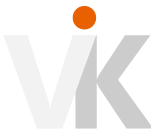The shift to hybrid and remote work has transformed the public relations (PR) industry. The initial excitement of flexible hours, no daily commute, and the freedom to work from anywhere was met with enthusiasm. PR professionals found themselves brainstorming from beachside retreats, coffee shops, or the comfort of their homes. However, as time went on, doubts began to surface.
Is being ‘green on Teams’ the same as being truly present? Are we losing crucial nuances in translation without face-to-face interactions? These questions have prompted many leading PR consultancies to reassess their approach. Some have reinstated full-time office attendance, believing that creativity, speed, and workplace culture thrive best when teams collaborate in person. And it makes sense—there’s a unique energy and synergy that comes from real-world interactions.
The Office-First Approach: A Return to Structure
For teams that have returned to the office five days a week, the results have been noticeable. Increased agility, stronger alignment, and more seamless collaboration are among the reported benefits. In PR, where crisis management, rapid response, and idea generation are crucial, the immediacy of in-person discussions can drive better outcomes. Additionally, mentorship and professional development often flourish in an office environment where knowledge transfer happens organically.
The Fully Remote Model: A Case for Flexibility
At the same time, several global firms and startups have embraced fully remote work, proving that the traditional office is not a prerequisite for success. Companies have reported increased productivity, improved employee retention, and enhanced work-life balance. The availability of digital tools and asynchronous communication methods allows teams to function efficiently, regardless of location. When trust and accountability are embedded in a company’s culture, remote work can be just as effective as in-person collaboration.
The Hybrid Model: Striking a Middle Ground
Hybrid work promises the best of both worlds—offering flexibility while ensuring in-person collaboration when needed. However, its success depends on clarity in execution. A poorly structured hybrid model can lead to communication gaps, confusion, and misalignment. The key is intentional leadership:
- Focusing on outcomes over hours logged online
- Building a culture of trust and accountability
- Ensuring seamless communication across locations
- Providing clarity on expectations and team engagement
What Doesn’t Work?
Regardless of the model chosen, certain challenges persist. A lack of direction, micromanagement, and a disengaged company culture can hinder success. Leadership must be proactive in defining workflows, setting performance expectations, and fostering a collaborative environment—whether in-person or virtual.
The Verdict: Adaptability is Key
Hybrid, office-first, and remote models can all work effectively. The real determinant is not the location but how organizations lead and communicate. PR teams must remain agile, ensuring that creativity, collaboration, and productivity are not sacrificed for convenience.
As the industry continues to evolve, one question remains: Can PR firms successfully redefine their work culture in a way that embraces both flexibility and effectiveness?
How is your PR team navigating this shift?

